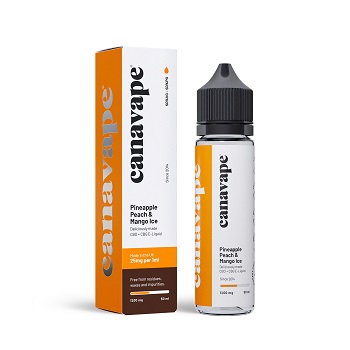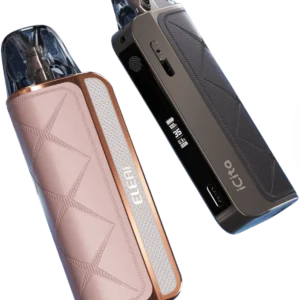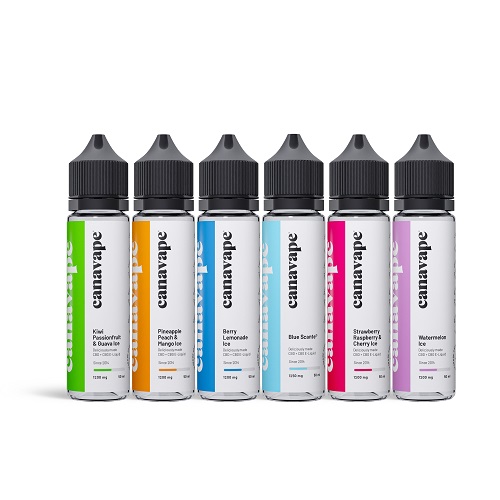
In recent years, the landscape of vaping has evolved dramatically, with non nicotine vapes emerging as a popular choice among individuals seeking a potentially healthier alternative to traditional smoking. As concerns about nicotine addiction and its associated health risks continue to rise, many are turning to these non nicotine options as a way to enjoy the act of vaping without the drawbacks of nicotine dependence.
These vapes offer the sensation of inhaling and exhaling vapour, often flavoured, providing a similar experience to nicotine-based products but without the addictive substance. This document aims to delve into the world of non nicotine vapes, exploring their benefits, potential drawbacks, and the reasons behind their growing popularity.

Vaping devices, often known as e-cigarettes, come in a variety of shapes and sizes. At their core, they all function in a similar manner. A battery-powered device heats a liquid, often called e-liquid or vape juice, which is then turned into vapour for inhalation. Non nicotine vapes utilise the same mechanics but with e-liquids that do not contain nicotine.
These devices can range from simple, pen-like models to more complex, customisable mods. Many vapers choose devices based on their preferred method of vapour production or flavour delivery. The e-liquids used in these gadgets often comprise propylene glycol, vegetable glycerine, and various flavourings.
The absence of nicotine in these liquids makes non nicotine vapes a suitable option for those wanting to experience vaping without the health concerns associated with nicotine. Understanding these devices is key to making informed choices about the non nicotine vaping experience.

The popularity of non nicotine vapes has seen a significant uptick in recent years. This rise can be attributed to an increasing awareness of the health implications linked to nicotine consumption.
Many individuals are now seeking alternatives that allow them to enjoy the sensory experience of vaping without the addictive properties of nicotine.
Additionally, non nicotine vapes appeal to those wanting to reduce their nicotine intake gradually.
These products have found a market among former smokers, who appreciate the ability to simulate the act of smoking in a less harmful manner.
The variety of available flavours also adds to their appeal, providing users with a wide range of sensory experiences.
Moreover, the social aspect of vaping, without the stigma of nicotine addiction, has contributed to their growing popularity.
As awareness and health consciousness continue to rise, non nicotine vapes are likely to become an even more prevalent choice.
When comparing non nicotine vapes to traditional smoking, a few key differences emerge. Traditional cigarettes contain tobacco, which, when burned, releases a cocktail of harmful chemicals including tar and carbon monoxide.
These substances are known to cause various health issues, such as lung cancer and heart disease. In contrast, non nicotine vapes do not contain tobacco or nicotine, eliminating these specific risks.
The absence of combustion in vaping devices means fewer harmful by-products are inhaled. This makes non nicotine vapes a potentially less harmful alternative for individuals looking to move away from smoking. However, while the reduction in certain harmful chemicals is notable, the long-term health effects of inhaling vapourised e-liquids are still being studied.
It’s important for users to remain informed about the potential risks and benefits. Overall, non nicotine vapes offer a way to enjoy the act of inhaling and exhaling without some of the dangers associated with smoking.
Non nicotine vapes offer several potential benefits, particularly for those seeking to reduce their nicotine intake or quit smoking altogether.
One of the primary advantages is the absence of nicotine, a highly addictive substance that can lead to various health issues.
By eliminating nicotine, users can enjoy the act of vaping without the risk of developing nicotine dependence.
Additionally, non nicotine vapes provide a similar sensory experience to smoking, which can help satisfy the habitual aspects many ex-smokers miss.
They also allow users to enjoy a wide range of flavours, enhancing the overall experience. For individuals concerned about second-hand smoke, non nicotine vapes produce vapour rather than smoke, reducing the impact on those nearby. Furthermore, the flexibility to choose e-liquids without nicotine makes it easier for users to control their intake.
Overall, these vapes offer a practical alternative for those seeking to distance themselves from the harmful effects of nicotine and smoking.

Non nicotine vapes are renowned for their diverse range of flavours, which significantly enhance the vaping experience. These flavours are derived from various flavourings and additives mixed into the e-liquids. Common flavour categories include fruits, desserts, beverages, and menthol, with options like strawberry, vanilla custard, cola, and peppermint being particularly popular.
E-liquid manufacturers use food-grade flavourings to achieve these tastes, ensuring they are safe for consumption. Besides flavourings, other key ingredients often found in non nicotine vapes include propylene glycol (PG) and vegetable glycerine (VG). PG is a thinner liquid known for carrying flavour effectively, while VG is thicker and responsible for producing denser vapour clouds.
The ratio of PG to VG can be adjusted to cater to individual preferences, influencing the vapour production and throat hit. These ingredients allow users to tailor their vaping experience, making non nicotine vapes a versatile choice for those seeking variety and personalisation.
Propylene glycol (PG) and vegetable glycerin (VG) are fundamental components in non nicotine vape e-liquids. PG is a colourless and odourless liquid, known for its ability to carry flavour well, providing a more intense taste experience. It also contributes to the “throat hit” that many vapers enjoy, similar to the sensation of smoking a traditional cigarette.
On the other hand, VG is a thicker, sweeter liquid, responsible for producing larger vapour clouds, making it ideal for those who enjoy creating dense vapour. VG’s natural sweetness can slightly alter the taste of e-liquids, adding a subtle undertone. The balance between PG and VG is pivotal; a higher PG ratio often means a stronger flavour and throat hit, while a higher VG ratio results in more vapour and a smoother experience.
Understanding these ingredients helps users customise their vaping experience to suit personal preferences, whether they prioritise flavour intensity or vapour production.
Vaping, including the use of non nicotine vapes, has undergone a significant shift in public perception over recent years. Initially seen as a niche activity, it has increasingly become mainstream, with a growing community of users and advocates. This change is partly due to the recognition of vaping as a less harmful alternative to smoking, leading to broader acceptance in social settings. However, public opinion remains divided.
While many regard it as a positive step away from tobacco use, concerns persist about its appeal to younger audiences and potential health impacts. The visibility of vaping in media and its portrayal in popular culture have also influenced perceptions, sometimes glamorising the activity.
As regulations evolve and more research emerges, the societal view of vaping continues to shift. Understanding these changing perceptions is crucial for users and non-users alike, as it shapes the cultural narrative around vaping and influences attitudes towards its use.
Non nicotine vapes have carved out a unique niche in social settings, often viewed as more acceptable than traditional smoking. Their absence of tobacco and nicotine makes them a popular choice for those wanting to engage in a social activity without exposing themselves or others to harmful substances.
Public spaces such as cafes, bars, and even some workplaces may allow vaping where smoking is prohibited, reflecting a broader acceptance. The variety of flavours available also adds a playful and personalised element, making non nicotine vapes a conversation starter among peers. However, etiquette still plays a role; users should be mindful of those around them, especially in enclosed or shared environments.
As vaping becomes more prevalent, societal norms continue to evolve, shaping how and where non nicotine vapes are used. This growing social acceptance highlights their role in transforming traditional views on smoking-related activities, offering a modern alternative that fits diverse lifestyles.
The vaping industry continues to evolve rapidly, with technological innovations leading the way. Recent advancements focus on improving user experience, safety, and customisation. One significant trend is the development of smarter devices featuring integrated technology like Bluetooth connectivity. This allows users to monitor their usage patterns, control temperature settings, and even access device diagnostics directly from their smartphones.
Furthermore, advancements in coil technology enhance flavour delivery and vapour production, providing a more satisfying experience. Refillable pods and tanks have also gained popularity, offering flexibility and reducing environmental impact compared to disposable options. Additionally, manufacturers are exploring more sustainable materials and designs to address environmental concerns.
As research progresses, we can anticipate further refinements in e-liquid formulations, prioritising health and safety. These innovations not only enhance the appeal of non nicotine vapes but also pave the way for a more refined, environmentally conscious future for the vaping industry.
The landscape of the vaping industry is being shaped by evolving regulatory frameworks and market growth. Governments worldwide are increasingly focused on regulating vaping products to ensure consumer safety and prevent underage use. Regulations often address aspects such as packaging, advertising, and ingredient transparency.
These measures aim to establish standards that protect public health while allowing the market to expand responsibly. In parallel, the market for non nicotine vapes is experiencing significant growth. This is driven by a rise in health-conscious consumers seeking alternatives to traditional smoking and nicotine-based products. The demand for diverse flavours and customisable options further fuels this expansion.
Companies are investing in research and innovation to meet regulatory standards and consumer expectations. As regulations become more defined, they are likely to encourage industry stability and consumer confidence, fostering a sustainable market environment for non nicotine vapes.
Understanding these developments is crucial for stakeholders to navigate the future of the vaping industry effectively.